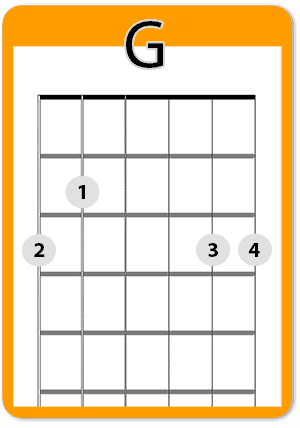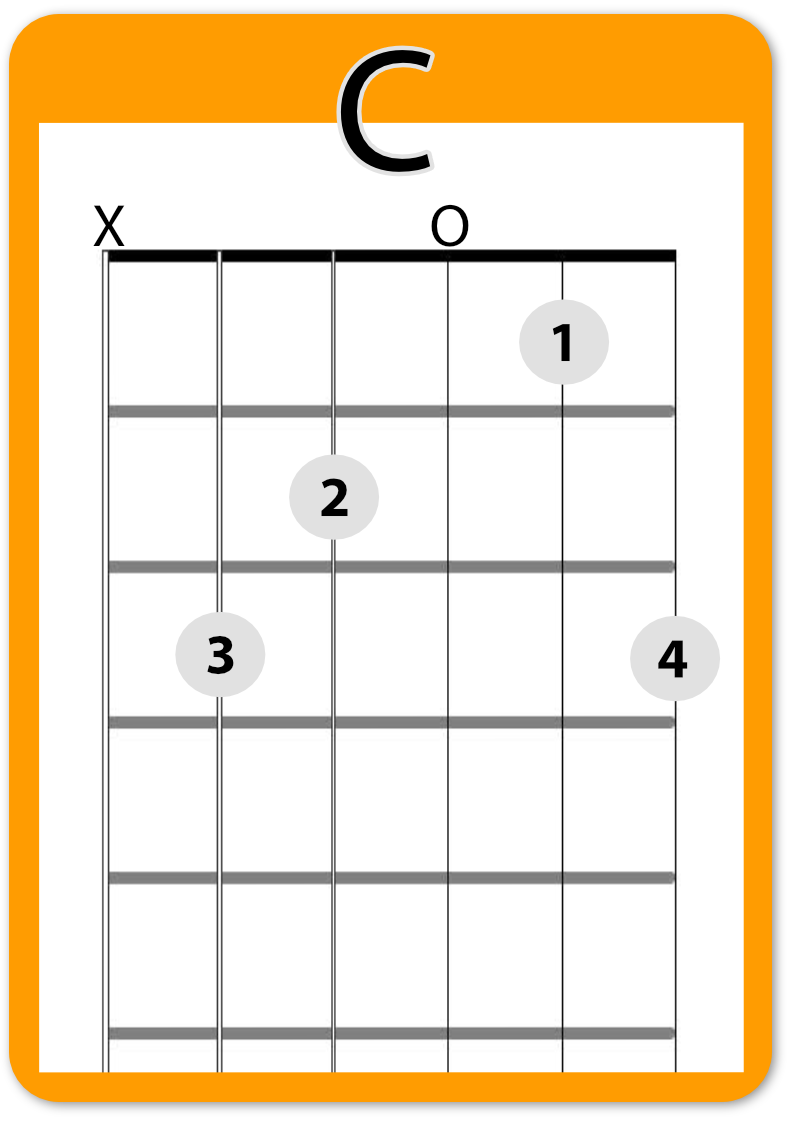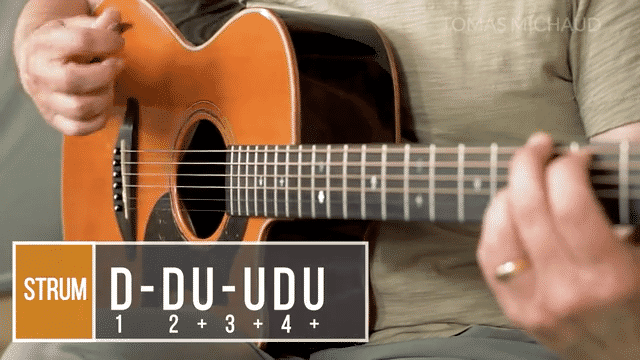This famous tune was originally recorded by Peter, Paul, & Mary, and then a later very successful recording was done by John Denver.
We’re gonna learn this song in its original key of G, even though this key might be too high or too low to sing for many of you. However, I want you to try to learn it in this key so you can play along with some YouTube videos and recorded tracks. Also you should learn it because it is a great progression for beginners.
However, if you find that singing along in this key is too difficult, I recommend you change keys through the use of a capo or just change the chords (transposition). But we’ll get to that later.
Chords in the Key of G



Leaving on a Jet Plane features three chords in its original key of G. We start with the G chord, then C and finally the D chord.
I’m doing the four finger G and four finger C chords, as a lot of beginners find these chord shapes easier than the typical folk shapes. Feel free to use what works best for you.
You’ll notice that the transitions between these chords are pretty easy. Going from the G to the C you just need to move your fingers.
Moving to the D you just have to take the pinky off and leave that third finger right where it is, which provides a nice anchor. You can do a lot of songs with these three chords!
Leaving On A Jet Plane Guitar Chords
This progression is easy, with no quick changes and remains the same for the entire song. It remains the same for the verse and the chorus, making this a great song for beginners.
First, we’re going to play one bar of G, then one bar of C. Repeat that three times and then move on to two bars of D.
Then we repeat that entire sequence over and over, two times for the verse and two times for the chorus. Take the time to map out the entire song with the chord progression.
To make it easier, let’s do just one single downstroke per bar with the corresponding chord. Go through the whole song just to map out the entire form.
The Next Step
Once you can play the entire song with just one strum per measure, it's time to move on to the next step. Try playing a downstrum on each beat.
That means you will be playing four downstrums per measure with the corresponding chord. Go through the entire song playing one downstrum per beat.
Adding A Strum Pattern

The next step is to add a strum pattern. We’re going to use what I like to call a pop-rock strum pattern. It is a fairly common pattern that you can use in many songs.
The pattern is down, down-up, up-down-up. This pattern takes up one full measure or four beats.
If this is awkward, work on the song with just downstrums until that feels natural. It may take a bit before this pop-rock strum pattern feels good.
At the beginning, stick with just one chord until the pattern feels smooth. Then you can try to play the entire song with the pop-rock strum pattern.
Changing Keys To Fit The Voice
There are a couple of ways to alter the key to fit your or another person’s voice better. The first is through the use of a capo.
Try putting the capo on the fourth fret. This will raise it two full steps, so we’re actually on the key of B.
Keep in mind we would still play the same exact chords and shapes mentioned above, but naturally the sound and key will change because of the capo.
To do this without a capo, we need to transpose the song. Let’s try to change it from the key of G to the key of E.
In this new key we’re going to be using the chords E (instead of the G), A (instead of the C) and B7 (instead of the D). Try it in this new key!
Key Chart
Key | I (1) | IV (4) | V (5) |
|---|---|---|---|
G | G | C | D |
E | E | A | B7 |
D | D | G | A |
Conclusion
Learning how to play Leaving on a Jet Plane is a great exercise for beginners. This song features easy chords and you can even start to get familiar with the concept of transposition.
I’ve created a backing track to this song so you can play along for some extra help. Please find the link below.
Save To Pinterest...

